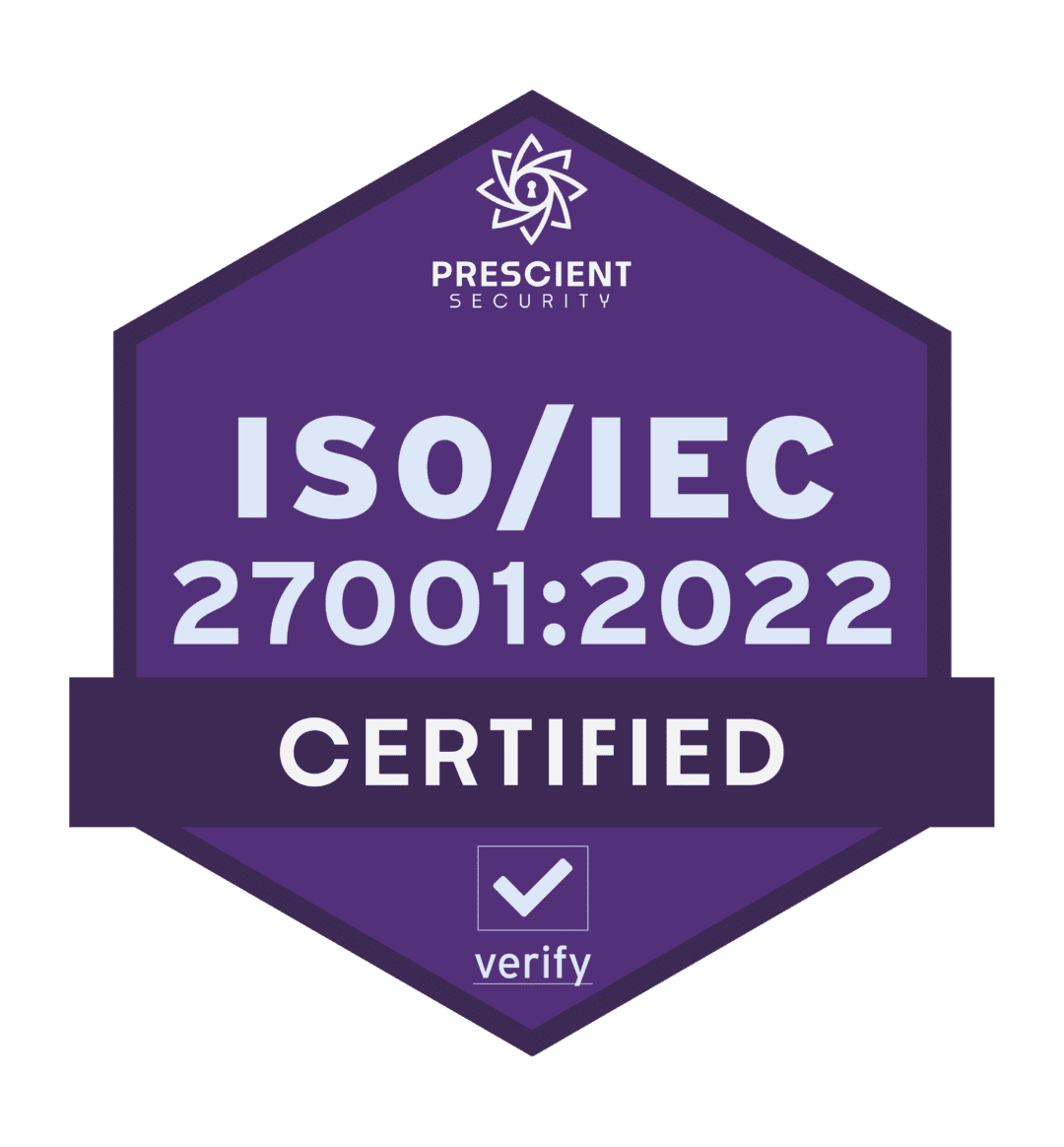Marcus Sheridan
How one internationally known content marketing expert, as well as a master salesman, thinks about using email and video for sales-based communication. This is Marcus Sheridan’s story about Pushing Send.
Marcus Sheridan is a highly sought-after international keynote speaker known for his unique ability to excite, engage and motivate live audiences with his simple, yet powerful transformational business approach. Marcus has been dubbed a “Web Marketing Guru” by the New York Times and in 2017 Forbes names Marcus one of 20 “Speakers You Don’t Want to Miss.”
Key Points From This Episode:
- Sending out individual emails from a sales perspective versus a marketing perspective can affect the success of the email.
- Get your customer’s attention by having a great subject line and focusing on the problem of that individual and use video instead of just text.
- Death by Subject Line: Following up, checking in, reaching out and touching base.
- The three simple best practices for one-to-one emails: include the name, video and something personal in the subject line.
- Specificity versus generic versus just checking in.
- Video is important for sales-based emails and over 80% of content consumption is video.
- Mimic the sale process as close as possible to what they would experience in person.
- Every company of any size should utilize a full-time videographer. This is better than the speed and expense of video production companies.
- With video, don’t waste people’s time. Immediately get to the nuts and bolts and start with the problem and then transition into the solution.
Tweetables:
“The moment, marketers, stop talking and teaching like marketers and start talking and teaching and thinking like business owners and sales leaders, everything starts to change.” – @theSalesLion
“We have found ways to ensure that we get people’s attention. We focus on great subject lines. We focus on the problem that they are having individually. We’re not generic or specific with how we speak to them.” – @theSalesLion
“The key is the specificity by which we say that we’ve got to send a signal that says this message was made for you. It’s about you. And if you don’t open it, you will miss something that could lead to error, mistake, frustration, pain, loss, etc. That is the key.” – @theSalesLion
“There’s nothing worse than a false hope pipeline for a salesperson.” – @theSalesLion
“We have to mimic the sale process as close as possible to what they would experience. If they were talking to a sales person, video is the essential key to that.” – @theSalesLion
Links Mentioned in Today’s Episode:
Episode Transcript
Marcus Sheridan:
The moment, marketers, stop talking and teaching like marketers and start talking and teaching and thinking like business owners and sales leaders, everything starts to change. That for me is where the foundational elements come from because ultimately what I realized Bryan is what I’m obsessed with is clean communication. That’s what I love. I love to teach it and I love to do it could manifest itself in different ways. Sometimes it’s called leadership communication. Sometimes it’s called sales. Sometimes it’s called email communication, right? Sometimes it’s subject lines, but it’s all clean communication so that the audience says this makes total sense. I get it. That’s what it’s all about for me.
Bryan Kelly:
From rasa.io, the free tool for sending smarter and better email newsletters. This is Pushing Send a show featuring people who send emails, their subscribers actually want to read I’m Bryan Kelly and on today’s show how one very well-regarded content marketing expert thinks about using email for sales-based communication. Here’s Marcus Sheridan sharing what he’s learned about email. So Marcus, how important has email been for your various businesses?
Marcus Sheridan:
So there’s two sides to this. There’s the, oftentimes when we think about email, we look at it mostly from like a marketing standpoint and from a marketing standpoint, I don’t think I was ever just naturally great with email. It wasn’t necessarily our, our thing per se. Where we thrived and where it’s really made a dramatic difference for myself and for my businesses is the way we send out individual emails from a sales perspective. When we do individual reach outs, we spent a lot of attention and time on that, which is funny because you know, it’s wild. I have trained sales teams all over the world and I consistently ask a question and that is who here, let’s pretend it’s an audience of sales people who here has ever been taught how to write an effective subject line for one-to-one email. And I’ve never had anybody raise their hand before, which is pretty stunning if you think about it, right? Because everybody knows that the number one factor that dictates whether or not someone opens up an email is the subject line. Marketers. Think about subject lines for hours on end, just to make sure they hit the perfect one for the next newsletter or for the next campaign. And yet salespeople send out sometimes hundreds of emails a week. And the very, very high majority have never been trained, which is why the national average for open rates for one-to-one emails is 18%, 18% from a sales person to a customer or prospect combined 18%, 18 out of a hundred get open data to never get opened. And it’s because of this very problem. And so where we have excelled is we have found ways to ensure that we get people’s attention. We focus on great subject lines. We focus on the problem that they are having individually. We’re not generic or specific with how we speak to them. And also the very high majority of emails we send out from a sales perspective, and of course from marketing too, but from sales have video instead of just text and those two things have made a massive difference.
Bryan Kelly:
What do you think is the key reason that only 18 out of a hundred sales-based emails are open before we started recording? You actually mentioned death by subject line.
Marcus Sheridan:
Yeah. So what’s death by subject line for an email, especially for somebody in sales. So one is following up. Two is checking in ,three is reaching out, four is touching base. Okay. If you want to ensure that your emails don’t get opened, do you send one of those four now? Here’s, what’s fascinating. As I say those four everybody, that’s listening is thinking how many times have I sent an email that included that subject line in there? We’ve all done it. We’re all guilty of it. And the fact of the matter is if you look at this world in a post COVID situation right now, inboxes are more flooded than they’ve ever been. We are inundated with emails to filter out. So why do we keep some in our inbox for later? Why do we open some that second? And why do we chuck another set? Every day I spend time chucking, chucking, chucking, and all of a sudden I’ll save one. Even though I don’t know, the person don’t know, I don’t know who they are, but they said something that grabbed my attention. There’s the three simple best practices for one-to-one email. Subject line include the person’s name again, without sounding cheesy, you include the word video and you include something personalized about that person. So let me be hypothetical for a second. So if I was emailing you, it could be something like Bryan, a quick video regarding a flaw with your podcast. Now you’re like, what? Suddenly, okay, this guy’s got my attention. It would be very hard for you to throw that email away without even opening it at that point. And assuming that there really was an observation that they made, that they were sending to you. That was legitimate. That was helpful. That’s a beautiful subject line. It has to be true though. It can’t be bait and switch. That’s unacceptable. That’s completely unacceptable. But if you look at that, that what I just stated that can be applied to industries all over the world. The key is the specificity by which we say that we’ve got to send a signal that says this message was made for you. It’s about you. And if you don’t open it, you will miss something that could lead to error, mistake, frustration, pain, loss, et cetera. That is the key. As soon as you teach that to a sales dealer, like a son of a gun son of a gun.
Bryan Kelly:
Yeah. It’s so simple, but it’s not easy. So what’s the other one.
Marcus Sheridan:
The other one is when it comes to sales teams, which is the Dear John subject line, which is so unbelievably important. And nobody’s been taught this. So if you go to a sales team right now and you say, raise your hand, if you have ever been ghosted by a customer before, and everybody raises their hand, raise your hand if right now you have somebody in your pipeline and you’re just waiting for them to respond to your stinking email because they said they were a week or two or three ago. They said they were going to get back to you. They said they were going to have a decision for you. Everybody in the room raises their hand. Okay. So how do you ensure that you get a response every single time, every single time? How do you get somebody? Almost? I should say almost every single time to quickly respond when you’ve been ghosted. Well, the way that you do that is the psychology has to be that they feel like you’ve given them permission to walk away and to disappoint you. The way that this comes out is by saying, let’s say Bryan, that you were so in my previous life, and I still do own a swim pool company. Right? And so that’s my backstory. And so let’s say you were looking at a pool and I had given you a quote for a swimming pool. One of my sales people had, and you said that you’re going to let them know, and then you didn’t semi ghosted them. And that moment they are to send you an email. And the email is Bryan, assuming you found another pool company for your needs and it’s literally that simple. But what we’ve done in that moment is in the subject line, we’ve given you permission to disappoint me as the salesperson. And now one of two things is generally going to happen. In most cases. First thing that’s going to happen is you’re going to respond to your and say, thanks for reaching back out. Yes, we found somebody else. Now that’s a win because there’s nothing worse than a false hope pipeline for a salesperson. We want to know that the people that are in our pipeline are really truly prospects and not, has-beens not dead leads. We want them to be alive. The second option is they’re going to respond with I’m so sorry. I’ve been meaning to email you. We’re still in the game. Generally, you get one of those two and generally you get it the same day happens all the time. What’s crazy. most sales teams never been taught that. So whenever I’m with a group and I give that simple tip that day, I’ll get a rash of emails. Assuming they have my email that says, no, Marcus. I tried that tip, Oh my gosh. I was like three people that ghosted me, two of them apologized and they’re back in the game. So that’s powerful. That’s powerful. So those are the reasons for it comes down to specificity versus generic versus the just checking in which we’ve all grown so bloody accustomed to that we literally no longer see it.
Bryan Kelly:
When we come back. Marcus describes lessons. He’s learned since starting his first business and more specifically the principles he discovered when it came to sales communication and how they apply to email. I’m Bryan Kelly, and you’re listening to Pushing Send from rasa.io.
rasa.io:
Creating email newsletters takes a lot of time. You might curate articles, write content, tweak your template, and look up metrics and not to mention you’re probably doing all of this once a week. well at rasa.io, we said enough and built a free tool to simplify the process, which saves you time. It also uses AI to personalize emails for each subscriber based on their interests. That means they get stuff they like to read. Want to see how it works? Visit www.rasa.io and click how it works.
Bryan Kelly:
Welcome back to Pushing Send. I’m Bryan Kelly. Marcus Sheridan is internationally known as a content marketing expert, as well as a master salesman and he’s learned firsthand a few principles in order to utilize email effectively for sales communication. Here’s Marcus telling me how he discovered a few of these principles. What led you to discover some of those best practices? You mentioned a moment ago, like the Dear John subject line?
Marcus Sheridan:
I started the swim pool company in 2001 with a couple buddies. And I ended up being a sales person and a business owner. I was our main salesperson. And then the market crashed in 2008 and suddenly I had to learn digital marketing to save the business. Long story made short. We ended up embracing a philosophy that today I called, they ask you answer, and we became the Wikipedia of swimming pools, specifically fiberglass pools Today, our website RiverPoolsandSpas.com river pools is the company. It’s the most trafficed swim pool website in the world. Now this happened though because of a very, very simple philosophy. We’re going to be the best teachers in the world. We’re going to answer every single question that we’ve ever been asked from a sales perspective on our website. We’re going to do it through text. We’re going to do it through video. And so I had been a salesperson for years. I’d heard the questions. I took all those questions. I addressed them well, really address them well on our website. And so I became this marketing guy because I started talking online about the stuff that I was doing with River Pools. And then suddenly companies started saying, Hey, wow, could you teach us how you did this thing? So my history was rooted in business ownership and sales language, but I became this marketing guy. And I think sometimes when people say, what caused your book? They asked you to answer what caused it to be successful. There’s a couple of reasons. One of the biggest ones though, is I didn’t write it in a way that it sounds like a marketer wrote it. If a business owner reads it, they read it and they say, why the heck are we not doing this? But too often when they read marketing books, they say, Oh yeah, marketing stuff. And that’s where it stops. That’s where it stops. Right?
Bryan Kelly:
Yeah. Oh yeah. It’s so true. Now you’ve talked about the importance of video for sales based emails. And I’m curious what some of the psychology there.
Marcus Sheridan:
We’ve known video was a big deal. We know that 80% of the content consuming online right now in terms of time, investment is video. So it’s just, it’s just, the proliferation is astounding. And then all of a sudden we have a pandemic that just creates even more of a need because if they can’t see it, whatever it is, it doesn’t exist. And that’s the mindset you, as a company need to start having all of us do. In other words, we can say, it’s our people that make us different. Everybody says that it doesn’t mean anything to the marketplace. Show me your people show me like, literally show me what makes them different. Right? Our service, our service that separates us. Every single company in the world likes to say that big whoop. So show me how your service department works. How do I know seeing is believing and we want to see it and never can we show it easier than we’re showing it right now? Here’s a crazy stat that came out just recently, but by Gartner and this one is downloading astounding, Bryan, here’s the stat, 33% of all buyers would prefer to have a seller free sales experience. Thinking of the irony in that. Now the beauty is it goes to 44% for millennials, right? So these people are saying, I really don’t want to talk to anybody. Now, if you don’t talk to anybody, what has to happen? We have to mimic the sale process as close as possible to what they would experience. If they were talking to a sales person, video is the essential key to that. And so we’ve got to start thinking about video so much differently, like certain mindsets you should have. We’re a media company, whether we like it or not. That’s one example because you might not have gotten into business thinking you had to do video, but you see the consumer doesn’t care about our feelings and opinions on video. They just want to know, can I see the thing? Can I watch an example? No consumer, no visitor to your website has ever said, Oh, look, there’s no video here. I bet you, they don’t have video because it makes them nervous. Let’s just call them on the phone. Instead. Nobody’s ever said that, they’re not going to say that because they just don’t care. We don’t care. We just want to see the thing. We can’t see the thing. We take our trust and our money elsewhere. That’s how it works. There’s never been more simple tools to start to show the thing. Can you share or describe an example in the past video was all you had to bring in and up production company BS today. Absolutely do not have to do that. We’ve never had easier equipment. And these your tools take, for example, one-to-one video recording tools like the Vidyards of the world, the Bomb Bombs, the Looms, Soapboxes, all those things. So easy for that sales person to create that one-to-one video that allows them to show a prospect their face, to explain the thing with the energy enthusiasm to gesticulation, they would have. If they were in the boardroom together. Why would you not do that as a sales person? You want to start to get comfortable on camera. As an organization, internal emails from leadership should be video based sales team conversations should be video based. That’s what’s going to make video conferencing, easier for your salespeople start to do with prospects, right? And if you want to stand out from everybody else, you do this. You know, my agency, we’ve got a, I’ve got a marketing agency, I own pool company, manufacturing company, also in a marketing agency, speaking company, those are different businesses with all of our emails that are longer than a couple sentences. They’re video-based all of them, all of them, our sales teams do not meet with anybody unless it’s on video first, right? We don’t do phone call conversations. We do video conversations. That’s that is a requirement. That’s how we do it. Right? When we send out proposals, we never just send out a proposal. That’s a proposal, that’s a video. that’s us explaining said proposal. They’re always seeing a face. And that’s why we constantly hear people tell us like with our, my agency at Impact constantly saying things like, you know, I just felt like I knew more of your staff, your team than any other organization or agency that we talk to. You guys seem much more personal, you seem much more human that comes out because we have the standard of video. We see ourselves as a media company. There’s such a, such a big deal. Actually have a book coming out this next week on it. So depending on when this gets released, but right now, if you are listening to this right now, just go online to Amazon and type in the Visual Sale. And this is a book about how to create a culture of video within your organization. One last thing I’ll say about video too is if you really want to do exceptional things with video and your organization, assuming you’re more than just a solopreneur, just got one or two employees. If you’ve got any business of size, let’s say, then you should right now have a full-time videographer. Every one of my companies that I own, we have a full-time videographer. These aren’t massive companies, but they all have a full-time videographer. Why? Because we’re media companies. That’s what we do. And we say, we’re going to show it every single. We want every single page of our website to have a video that’s specific to that page. Every product, every service have a video that’s specific to that page. We want amazing customer journey videos that we have made. And I don’t want to hire a stinkin video production company that’s going to be slower. That’s going to be more expensive. That’s going to hold me back. Now. It doesn’t mean that I will hire a video production company to do some high end stuff, but it just means I don’t need to call them because the future of digital is the ability to produce your own content. In-house. Don’e let anybody lie to you. It’s not going to happen. You’re not going to become a profound thought leader by somebody producing all of your content for you. And you might have them produce some for you, but you should be able to produce the majority on your own.
Bryan Kelly:
Exactly. There’s a place for high production, but not for every video you need to create. So what’s the approach to create a great video message for sales emails, something that provides value to the recipient.
Marcus Sheridan:
Yeah, I think the key is always you follow many of those same best practices that you do with the subject line. You follow it with the actual video. A couple of things that we say is never waste their time. Get quickly to the nuts and bolts. Okay. Don’t mess around. Don’t do a bunch of Hi. I appreciate you so much taking the time to watch this video that is wasted time. It’s like the websites you see on the homepage that say welcome. Where’s that? Not, not assumed. You know what I’m saying? It doesn’t make any sense. So it’s same thing here. She immediately gets to brass tacks, immediately, come out and say, Hey, Marcus, someone produced this video for you because I want to talk to you now about, and it’s the problem. Always start with the problem. The mistake that companies make is they start with their quote solution, which when in the history of earth, has anybody ever researched the phrase solutions in Google? You don’t use that word. When you search in that little box, you search the problem that you have. That’s what you do, problem that you have, right? It’s like, nobody’s that just drives me crazy. How look at every B2B business in the world, in every single one of their websites and the navbar has solutions. I’m like for the love of all is pure. And Holy, do you not realize that nobody actually says that word as a buyer When you obsessed with the way buyers, think you start to see the world differently. Marketers issues of free solutions. Web designers use the phrase solutions, but buyers use the phrase problems. This is why on your website. You should have a section that says problems we solve problems. We solve and watch how much traffic that’s going to get you, how much interaction that’s going to get you. That’s the way they think. So you always start with the problems. When you send out each video, you immediately get into it. Then you transition to, so you might be asking yourself, well, how do we fix this thing? Here’s the solution that, that, that the dot here’s what I would suggest that we do next. That’s it it’s that simple. It’s that simple. But by doing that on a reach out email, on a prospecting email, that’s magical because the person says, wow, they prepared this for me. They know me, they know my problem. And if they’re willing to do this for me and show me that they know me, well, then maybe I’ll just give them some a my time. The issue is too often, whether it’s the subject line or whether it’s the video, it feels like it could have been sent to any company in the world. And that’s the guarantee that it will not get listened to that it will not make them flinch, that it will not make them click.
Bryan Kelly:
Marcus. Sheridan is a master at using various communication channels. And you’ve heard firsthand some of his ideas around how to do this. Has what he shared, sparked some ideas, how you can utilize these principles in your sales and marketing email efforts. I absolutely hope so. Coming up on our next episode, we’ll hear from Peter Cooper, the founder of an email newsletter network with over 500,000 subscribers, Peter describes how he built his network and how it’s changed over the past 10 years. He’s been doing it. You won’t want to miss what Peter shares with me during our talk. So if you’re listening to Pushing Send for the first time, be sure to subscribe at Apple podcasts or wherever you’re listening so you don’t miss an episode. And if you’ve enjoyed what you’ve heard today, I’d encourage you to check out a few of our other episodes that we’ve got while you’re here. Lastly, leaving a review will help us share these stories with other people. Exactly like you. Thanks in advance for doing that. I’m Bryan Kelly, and you’ve been listening to Pushing Send from rasa.io.














